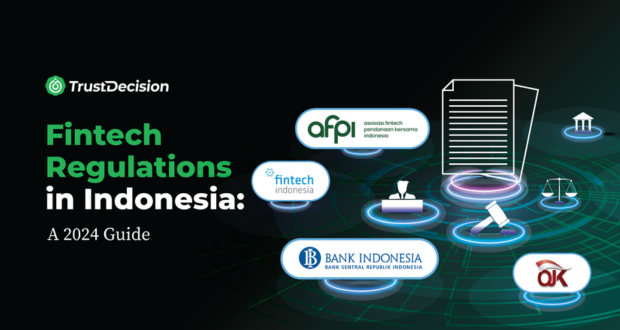1. The Shift Towards Specialization
Many companies embrace specialisation as a strategic imperative in an environment where fintech regulations are multifaceted and subject to change.
Rather than attempting to excel in every financial technology aspect, fintech firms focus on specific niches.
Companies can streamline their compliance efforts and deliver more tailored, competitive offerings by concentrating on a particular area, such as digital lending, payment processing, or blockchain-based solutions.
For instance, specialized peer-to-peer lending platforms like Prosper and LendingClub have thrived in the U.S. by focusing exclusively on connecting borrowers with investors.
In the APAC region, fintech companies can emulate this strategy by identifying underserved niches within their target markets and devising specialized solutions that align with local regulatory requirements.
2. Collaboration as a Regulatory Strategy
Collaboration has emerged as a potent tool for fintech firms looking to thrive amidst regulatory complexities.
As highlighted in our case studies previously, fintech companies can access existing customer bases, regulatory expertise, and infrastructure by partnering with established financial institutions.
Such collaborations often involve white-label solutions, where fintech firms provide the technology backbone for traditional financial institutions to enhance their service. We've witnessed successful partnerships between fintech companies and banks in the APAC region, leading to innovative products and services.
Collaborations have also been instrumental in addressing regulatory challenges, as established institutions can offer guidance and support in navigating complex compliance issues.
3. Diversification into Financial Services
Another strategic approach for fintech companies is diversification into a broader spectrum of financial services.
Beyond their initial areas of expertise, fintech firms can explore opportunities to offer additional services, such as wealth management, insurance, or investment advisory.
This diversification can be achieved through partnerships, acquisitions, or organic growth.
For example, a fintech company specializing in digital payments can expand its portfolio to include digital wallets, investment platforms, or insurance products, thereby broadening its customer base and revenue streams.
The APAC fintech landscape demands strategic agility and adaptability. Specialization, collaboration, and diversification are not mutually exclusive; rather, they can be combined to create a resilient and growth-oriented fintech business model.
Infrastructure Models and Embedding Finance
The finance industry is undergoing a significant transformation, driven by the relentless march of technology and the changing expectations of consumers.
Let’s explore the growing demand for finance integration, the role of infrastructure models, and the opportunities and challenges that lie ahead.
Growing Demand for Finance Integration
Consumers in the APAC region are increasingly seeking seamless and integrated financial experiences.
They expect financial services to be embedded into their daily lives, whether they are making online purchases, booking a ride-sharing service, or managing their investments.
This demand for finance integration presents a unique opportunity for fintech companies to reshape the financial landscape.
One notable example of finance integration is the rise of super apps, which offer a wide range of services beyond traditional banking.
These apps combine banking, payments, investment, insurance, and more under a single platform, providing users with a holistic financial ecosystem.
In APAC, super apps like Grab, Gojek, and WeChat have gained immense popularity by offering users a one-stop solution for their financial needs.
Role of Infrastructure Models
Infrastructure models are at the core of enabling finance integration.
These models provide the technological backbone for fintech companies to develop and deliver their services.
They include secure and efficient payment gateways, digital identity verification systems, blockchain networks, and open banking platforms.
Open banking, in particular, has gained traction as a regulatory framework that promotes finance integration.
It allows consumers to grant permission for third-party fintech providers to access their financial data held by traditional banks.
This access enables fintech companies to offer personalized financial services and products, such as budgeting apps, investment platforms, and lending solutions.
Infrastructure models, such as open banking, are pivotal in enabling this transformation. Fintech firms that prioritize customer data protection, innovation, and collaboration with traditional players stand to thrive in this evolving ecosystem.
Opportunities and Challenges
Finance integration is reshaping the APAC fintech landscape. The opportunities presented are substantial.
Fintech companies that successfully embed financial services into consumers' daily activities can capture a significant market share and drive revenue growth.
Additionally, by providing innovative and user-friendly solutions, these companies can enhance financial inclusion by reaching underserved populations in the APAC region.
However, with opportunities come challenges, particularly in the realm of data privacy and security.
As fintech companies gather and process vast amounts of financial data, they must prioritize robust cybersecurity measures and adhere to stringent data protection regulations. Failure to do so can result in breaches, legal repercussions, and damage to reputation.
Furthermore, competition in the finance integration space is fierce, with both traditional financial institutions and tech giants entering the fray.
Fintech companies must differentiate themselves through innovation, customer-centricity, and compliance with evolving regulatory standards.
Conclusion
In exploring fintech regulation in the Asia-Pacific (APAC) region, we've traversed the dynamic landscape of financial technology.
Our journey has revealed the critical role of regulatory compliance, the nuances of APAC's regulatory frameworks, and the evolving trends in fintech regulation for 2023 and beyond.
Summary of Key Takeaways
- The Fintech Boom in the Asia Pacific: The APAC region is a global fintech powerhouse, witnessing rapid growth and innovation in financial technology. It is home to leading fintech players and a burgeoning user base.
- Challenges Posed by Regulatory Diversity: APAC's fintech regulatory landscape is diverse and shaped by varied economies, cultural factors, and developmental stages. Fintech companies must navigate this complexity to achieve compliance and growth.
- The Importance of Fintech Regulation in APAC: Regulatory compliance is indispensable for fintech firms aiming for sustainable growth. It fosters trust among consumers, attracts investment, and promotes industry stability.
- Understanding the APAC's Regulatory Landscape: We delved into the regulatory compliance toolkit, offering insights into APAC's regulatory frameworks and key regulatory bodies. This understanding is foundational for fintech companies.
- Diversity in Fintech Regulations: Variations across APAC countries, such as India, Southeast Asia, and Mainland China, pose unique challenges and opportunities for fintech firms. Cultural and economic factors impact regulatory approaches.
- Key Compliance Needs for Fintech Companies: Navigating fintech laws and regulations is essential. Startups must understand legal requirements and address regulatory compliance challenges to succeed.
- Regulatory Compliance Best Practices: Drawing inspiration from successful fintech companies, we learned about the strategies they employ to maintain growth and regulatory compliance.
- Trends and Changes in Fintech Regulation for 2023: The COVID-19 pandemic and evolving regulatory approaches have shaped the fintech landscape. Preparing for future challenges and changes is vital.
- Fintech Regulation in Specific APAC Markets: We explored the regulatory landscapes in India, Southeast Asia, and Mainland China, each with its own dynamics and recent developments.
- Specialization, Collaboration, and Diversification: Fintech companies are specializing their services, collaborating with traditional players, and diversifying into financial services to stay competitive.
- Infrastructure Models and Embedding Finance: The demand for finance integration is growing, driven by consumer expectations. Infrastructure models, including open banking, play a pivotal role in this transformation.
Preparing for Fintech Regulation Beyond 2023
The world of fintech is ever-evolving, and regulatory changes are certain to continue.
As we look ahead to beyond 2023, it's crucial for fintech leaders, CMOs, CEOs, and Heads of Digital in the industry to remain informed and adaptable.
Staying informed about regulatory updates, emerging technologies, and market trends is paramount. Fintech companies must continue to prioritize compliance, data security, and customer-centricity. Collaboration with regulatory bodies and traditional financial institutions can facilitate smoother transitions and foster innovation.
In conclusion, APAC's fintech regulation landscape is a dynamic space with immense potential. Fintech companies that embrace regulatory compliance, innovation, and a customer-focused approach are well-positioned to thrive in this exciting and evolving ecosystem.

-%2520Specialization%252C%2520Collaboration%252C%2520And%2520Diversification.jpeg)












